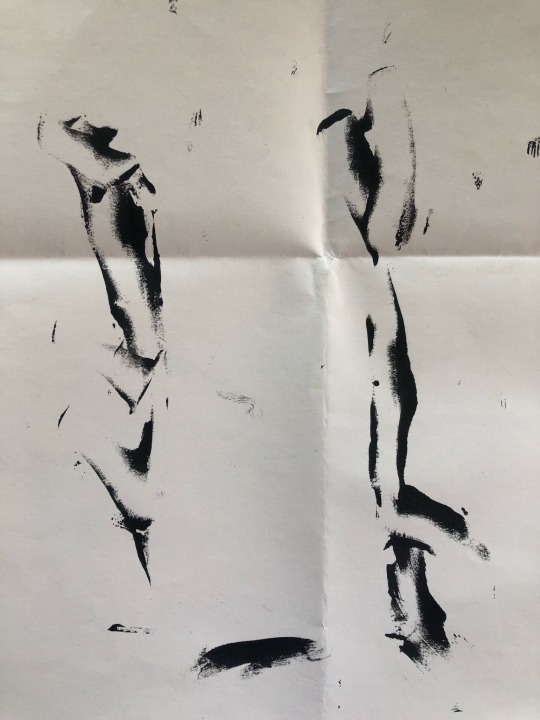#Blotting
Explore tagged Tumblr posts
Text

Thought process behind this:
It's a shame no one—absolutely no one—grabbed Zuko by the ponytail in book 1.
The general consensus that Katara acts like a booktok boyfriend.
Katara's pose is wrong perspective wise, but she came along so beautifully I didn't have the heart to change it. My job's to make the cow walk: whether it's on legs or nipples is none of my business.
#avatar the last airbender#atla#zuko#aang#katara#artists on tumblr#fanart#ink blot#avatar fanart#kataang#when i said ponytail zuko had grown on me i meant it#im gonna draw him lots
13K notes
·
View notes
Text
i cant stop thinking about the fact that the us and uk killed one million people in indonesia as part of the cold war effort and barely anybody knows about it much less cares. trying to tell somebody about it especially in the west will just garner laughter and celebration -- genocide is okay if they are (true or suspected) communists, no matter what. one million people
#op#this is not a number that exists solely in an infographic#those were whole and complete people with rich inner lives and families who probably thought very very similarly to you#who died in some of the most horrific ways possible#and its a total blot in the collective memory of the united states#the youngest of the victims were only as old as my father -- the majority of the survivors are alive today and still asking for an apology
4K notes
·
View notes
Text
Additional marks.
I always like the marks that were accidental or not planned. The incidental. These were prints and blots (?) of what was on acetate sheets. Too much wet, acrylic paint on the sheet to go into Betty! So we needed to blot them off first.




1 note
·
View note
Text

What is Stomach?
The stomach is a hollow organ located just inferior to the diaphragm in the left part of the abdominal cavity. Located between the esophagus and the duodenum.
Its main function is of secretion of acid and digestive juices, digestion of nutrients and Hormonal control.
Common Diseases of Stomach are :
Acid peptic disease
H. pylori infection
Stomach Cancer
Acid peptic disease
Peptic ulcers form when acid erodes the lining of the digestive tract. This can happen when there is excess acid in the system, or when the protective layer of mucus on the lining is broken down.
There are two major causes of peptic ulcers, bacterial infection and the use of pain relievers called nonsteroidal anti-inflammatory medications (NSAIDs). NSAIDs include aspirin, ibuprofen and naproxen.
H. pylori infection – Helicobacter pylori is a type of bacteria that lives in the digestive tract. H. pylori is very common; some data suggest that it is present in approximately 50 percent of people
This bacteria can cause the following, all of which can contribute to peptic ulcer formation:
An increase in the amount of acid in the stomach and small intestine
Inflammation of the lining of the digestive tract
A breakdown of the protective mucous layer
NSAIDs – The use of NSAIDs can also cause peptic ulcers in some people. They are commonly used to relieve pain and reduce inflammation. Many people also take low-dose aspirin daily to prevent heart attack or stroke.
NSAIDs can cause changes in the protective mucous layer of the digestive tract, leading to ulcers in some people. The risk of ulcer formation depends on multiple factors, including the NSAID type, dose, and duration of use.
Other risk factors
Genetics likely play a role,
People who smoke cigarettes are more likely than nonsmokers to develop peptic ulcers.
Drinking alcohol
certain foods
Psychological
PEPTIC ULCER SYMPTOMS
Commonest symptoms are :
Upper abdominal pain or discomfort (often a burning or hunger-like feeling)
Feeling full quickly when eating
Stomach pain, belching, or feeling bloated after eating
Heartburn or acid reflux
Nausea
Vomiting (in severe cases, there may be blood in the vomit)
Blood in the stools (which may cause stool to appear black or tar-like)
Upper endoscopy – An upper endoscopy is a procedure in which a thin, flexible tube is inserted into the mouth and down the throat. The tube has a light and a tiny camera on the end that projects images from within the digestive tract onto a monitor.
Ulcers can often be diagnosed through upper endoscopy. A small sample of tissue, called a biopsy, can also be taken to check for abnormal cells, cancer, or an infection with H. pylori.
Barium swallow – In some cases, a barium swallow may be done. This involves drinking a thick substance containing barium while X-rays are taken; the barium allows the digestive tract to be seen more clearly. This procedure is less common than endoscopy for diagnosing ulcers, but may be appropriate for some patients.
H. pylori testing – Anyone with a confirmed peptic ulcer should be tested for H. pylori so that the infection, if present, can be treated.
Treatment
Treatment of Acid peptic disease includes use of drugs which decreases acid secretion, drugs which improves the mucosal barrier function and helps in healing of ulcer. Your doctor can suggest better medicine for acid peptic disease.
H. Pylori infection of the stomach requires H. Pylori eradication medicine which includes antibiotics as well acid suppressive medicines.
For More Details - Website - https://www.kaizenhospital.com/ મો- +91 70460 12330
#mehsana#freehealthcamp#healthcampinmehsana#doctorinmehsana#gastroentrologistinmehsana#gastrologistinmehsana#GastroHospital#kaizenhospital#gastroenterology#besthospitalinahmedabad#kadi#acidity#blotting#liverdisease#livercancer#livercirrhosis#Healthcare#BestHealthcare#GastroDiseases#Treatment#esophagusdiseases#colonoscopy#endoscopy#phimpedance#manometry#gallbladderstone#acidreflux
0 notes
Text

LET THE BOY HAVE AN EDUCATION
officially at the point where we're starting to see where it's all headed and I am just going NYEEHEEHEE in delight at it all. ahhh...next week can't come soon enough...

#art#twisted wonderland#twisted wonderland spoilers#stage in playful land#stage in playfulland#leona: (devises an actually somewhat clever plan to take out the staff-puppets without breaking any rules)#leona: (taken out two seconds later because he sat down in the wrong place)#at this point i'm half expecting the ssr boys to actually bust in with a big sandwich platter or something#a cake with 'please don't kidnap people :)' written on it in shaky icing#kalim isn't good at plans but he DOES throw a good shindig and by god he's going to play to his strengths#also IT WASN'T SHINY TICKETS IT WAS GIDEL?!#MY BOY#MY BEAUTIFUL MAGICAL FELINE BOY#i mean i'm assuming at this point but that seems to be the implication#genuinely kind of shocked that they actually WERE being magicked into being extra gullible#it was ✨foreshadowing✨ all along...#the blot though! what about the blot!#is that going to be an issue or are we going to have enough to deal with already!#i have rocketed from 'i find these villains entertaining' to 'i am suddenly incredibly invested in them as characters'#LOOK there is one thing better than characters with sort of unhealthy codependent relationships#and that is characters with sort of unhealthy codependent relationships but TWIST IT'S NOT THE WAY YOU THINK#nyeeheeheeeeeee
5K notes
·
View notes
Text

Milan, Italy
4K notes
·
View notes
Text

teashop zuko was peak
716 notes
·
View notes
Text
What is Western Blotting? A Brief Overview

Western blotting is a common laboratory technique used to detect specific proteins in a sample. It's a key part of many research studies, as well as diagnostics for medical conditions. In this post, we'll give a brief overview of what western blotting is, how it works, and some of its applications. We'll also touch on some of the challenges associated with this technique.
What is Western Blotting?
In brief, Western blotting is a technique used to detect specific proteins in a sample. This technique is commonly used in biomedical research to study the proteins involved in various cellular processes.
In more detail, Western blotting involves separating proteins by size using gel electrophoresis. The proteins are then transferred to a membrane, where they are exposed to antibodies that recognize and bind to specific proteins. The bound proteins are then detected using chemiluminescence or radioactivity.
Western blotting is a powerful tool that can be used to study the function of specific proteins in cells. It can also be used to diagnose disease, as certain diseases are associated with changes in the levels of specific proteins.
The History of Western Blotting
Western Blotting (WB) is a technique used to detect and analyze proteins. It is an essential tool in molecular and cell biology, as it allows researchers to study the structure and function of proteins in different cellular contexts.
The history of Western blotting dates back to the early 1970s, when scientists first began using antibodies to detect proteins. The technique was initially developed for use in immunology, but soon found applications in other fields such as cancer research.
Over the years, WB has undergone many refinements and today it is one of the most commonly used techniques in molecular biology.
If you would like to learn more about Western blotting, please see our other blog articles or contact us for more information.
The Western Blotting Process
The Western blotting process is a common laboratory technique used to detect specific proteins in a sample. The procedure involves separating proteins by size using gel electrophoresis and then transferring them to a membrane. The proteins are then incubated with antibodies that recognize and bind to the target protein. Finally, the membrane is incubated with a detection reagent that visualizes the bound antibodies, allowing for detection of the target protein.
Western Blotting Applications
Western blotting, also known as protein immunoblotting, is a widely used analytical technique used to detect and quantify specific proteins in a sample. Western blotting has many applications, including determining the identity of a protein, determining the abundance of a protein, and detecting post-translational modifications.
One common application of western blotting is to confirm the identity of a protein. To do this, antibodies that specifically bind to the protein of interest are used. If the protein is present in the sample, it will bind to the antibody and can be detected using an appropriate detection method.
Another common application of western blotting is to determine the abundance of a specific protein in a sample. By quantifying the amount of protein that binds to an antibody, one can get an estimate of how much protein is present in the sample.
Finally, western blotting can also be used to detect post-translational modifications (PTMs). PTMs are changes that occur to a protein after it has been synthesized and can affect its function. Common PTMs include phosphorylation, acetylation, and ubiquitination. By detecting PTMs with specific antibodies, one can learn about how a protein has been modified and what effect that modification may have on its function.
Conclusion
Western blotting is a powerful technique that can be used to detect the presence of specific proteins in a sample. While it is often used in research settings, it also has applications in diagnostics and drug development. If you are working with proteins, learning how to perform a Western blot can be a valuable skill.
0 notes
Text

how zuko trying to help azula would go like
#so i unearthed this gem from long ago#i really do think that zuko would try to help azula#but he'd be both blunt and impatient#and not very successful#honestly iroh or ursa would be more well equipped#anygays! bye bye#avatar the last airbender#atla#zuko#azula#artists on tumblr#fanart#ink blot
4K notes
·
View notes
Text

Lightning Giant l Paul M Smith

2K notes
·
View notes
Text

Struggling to draw at workkkk
#scout#tf2#tf2 scout#scout tf2#my art#doodle#my arm hurtsssss from erasing#the ink blots grrahhh#AND MY ERASER IS SMUDGING EVERYTHING#The struggle...#why did I add his bandages? BECAUSE HIS HANDS ARE TOO FKIN BIGGG SOBS
525 notes
·
View notes
Text
You know, it's not that easy to admit when a AU is dead, so I just won't?? I'm still not sure
Instead I thought it'd be fun to show some of the things and ideas I planned out, so have these few no context drawings!










These are just some concept ideas that crossed my mind, guess I just never knew how to tell this story? Something along those lines and hey maybe someday! Anyways, I appreciate everyone that took some interest in it!
#the backup detectives#mickey mouse#donald duck#goofy#ortensia the cat#daisy duck#minnie mouse#phantom blot#peg leg pete#pluto the dog#professor ludwig von drake#mortimer mouse#gladstone gander#scrooge mcduck#fethry duck#my art#oswald the lucky rabbit
2K notes
·
View notes
Text
creation meets creator in the most terrifying way possible (you wont believe what happens next)
#rainbsart#animation#shipwrecked 64#sw64#shipwrecked spoilers#shipwrecked64#broadside beach#shipwrecked fanart#bucky beaver#rex broadside#kinda#blot the rabbit#cw flashing#ask to tag idk#i spent all day on this lol it was only supposed to be rex spawning in but i got a little silly#animating in ibis is next level pain im never doing it like this again#lmao#i always thought the way rex/blot spawns in is so cool#idk smth about it#i hope i did it justice here bc the first draft of some of it was. hoo
439 notes
·
View notes
Text



Latest picture of Sanctiphage of the Burning Blood. I really tried to push myself here
#my art#horror art#body horror#sanctiphage of the burning blood#nox requiem#nox requiem story#all of eternity is but one moment#and who could not bear a moment of pain for the one they love?#but where are you#they have hidden you from me#and blotted out my eyes#beloved i feel you but cannot see you
565 notes
·
View notes
Text

best friends! with no subtext whatsoever
based on the sillies! the tinies!!!

#save me wet blotting ink brush in csp save me#cissiecassie#cassie sandsmark#cissie king jones#wonder girl#arrowette#young justice#young justice 1998#yj98#lesbian#dc#comics
1K notes
·
View notes
